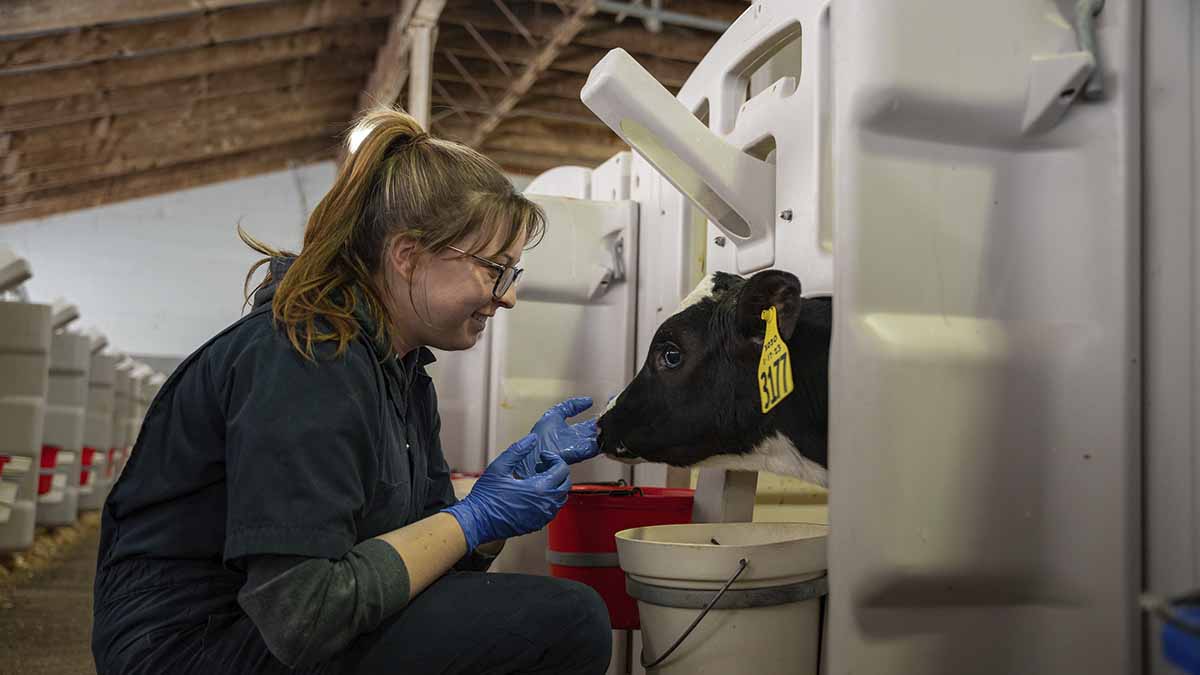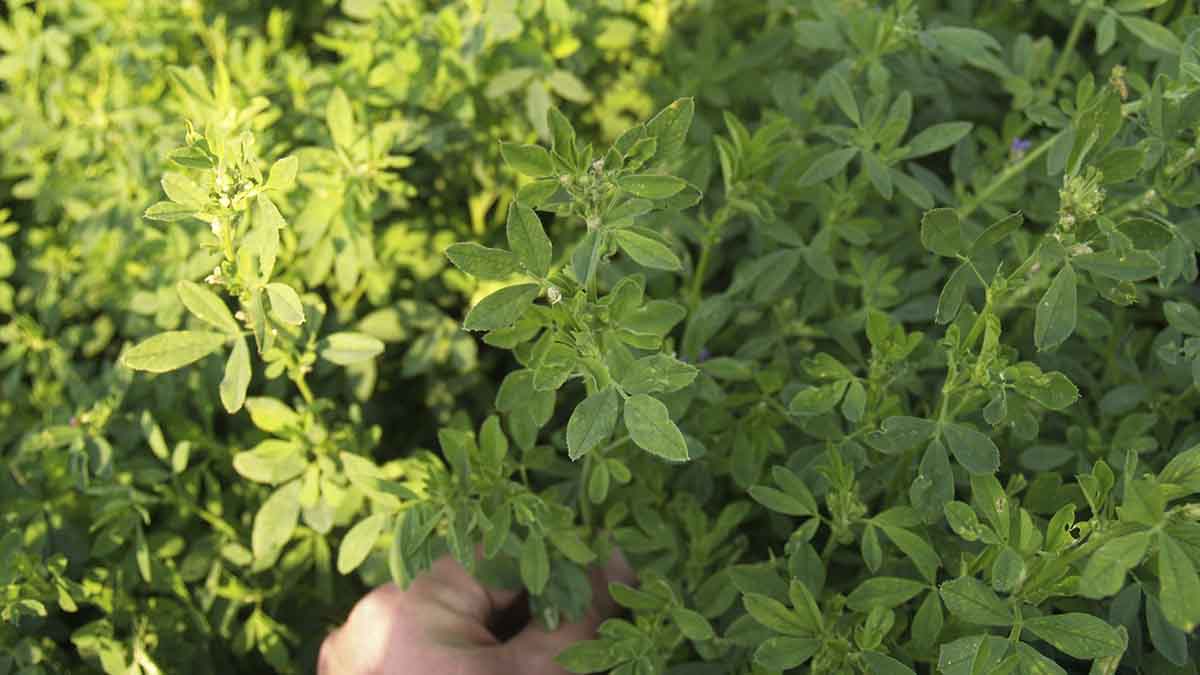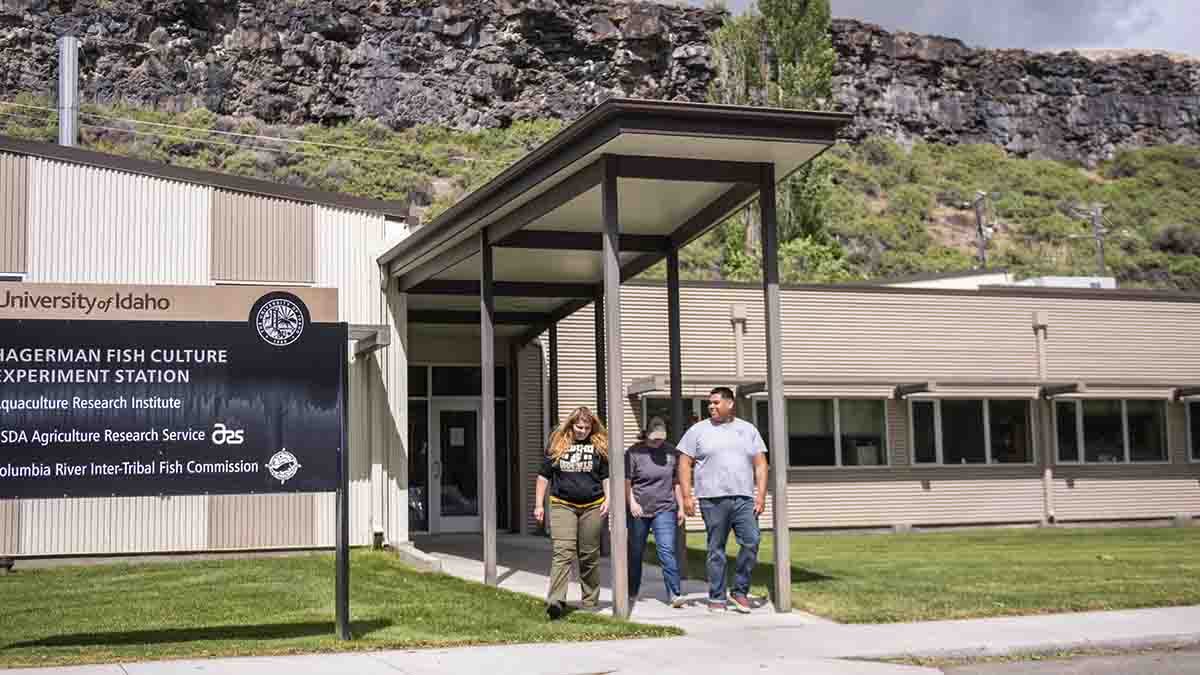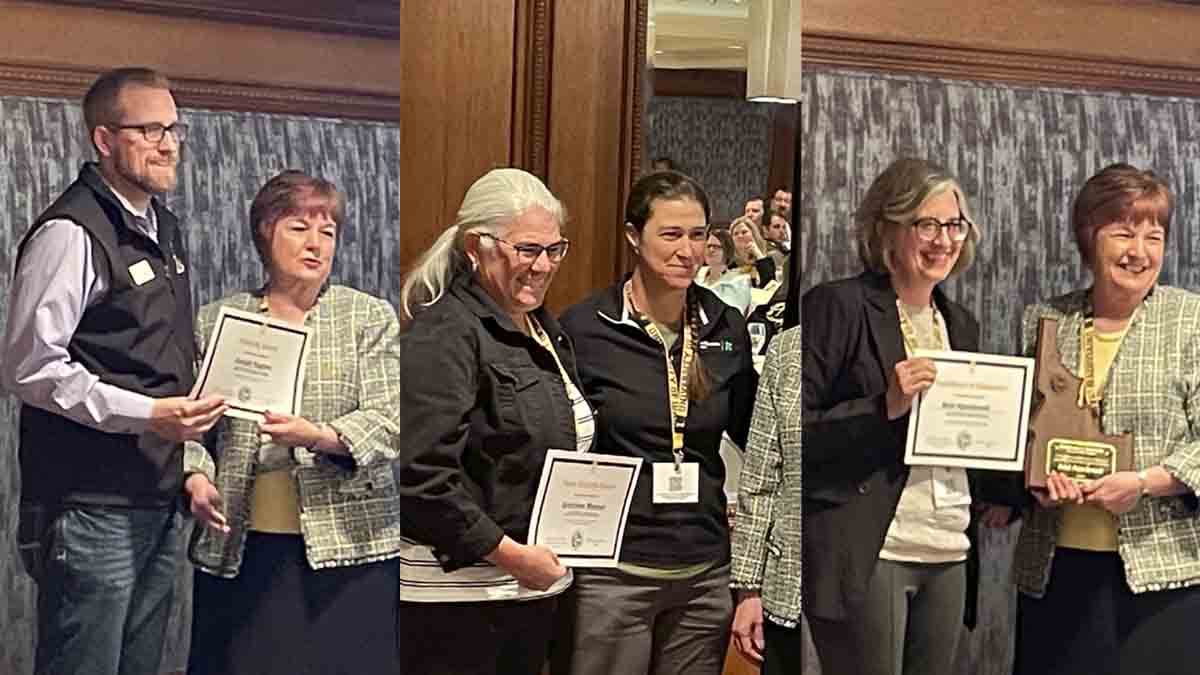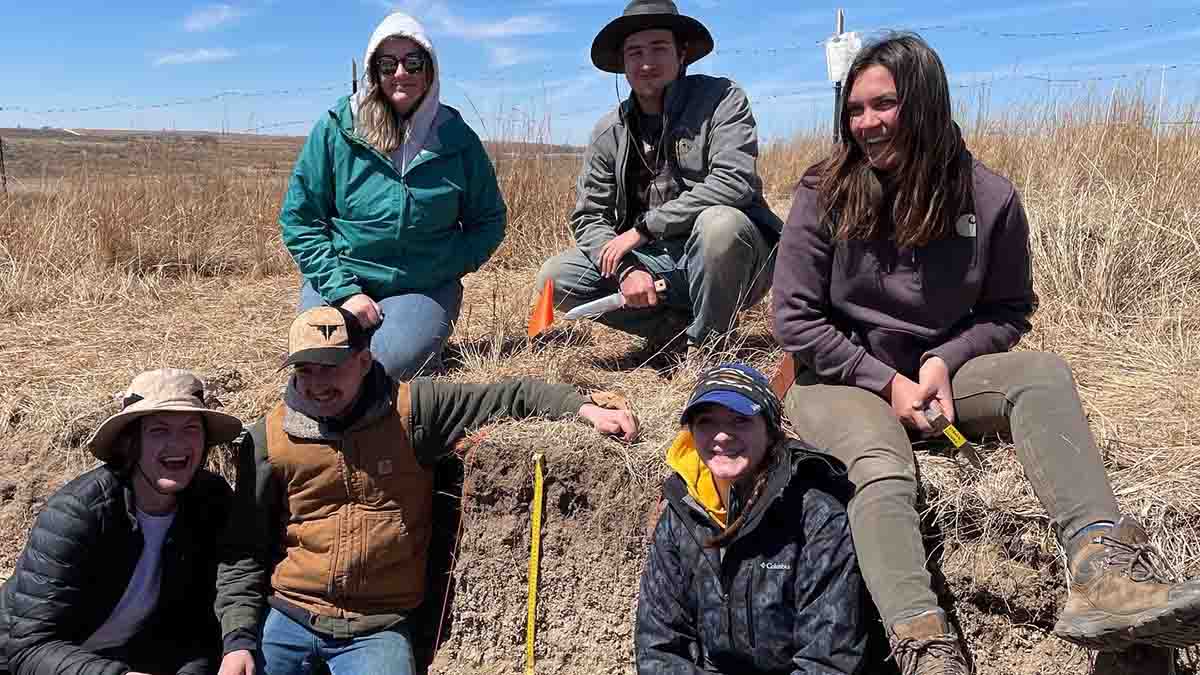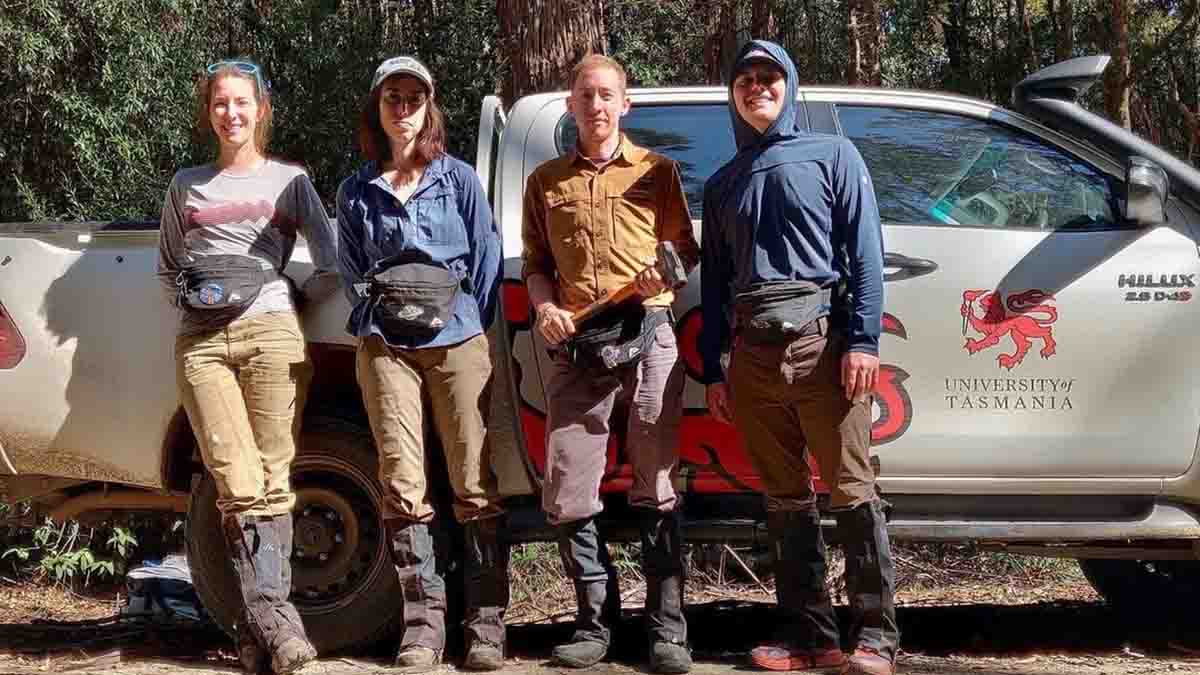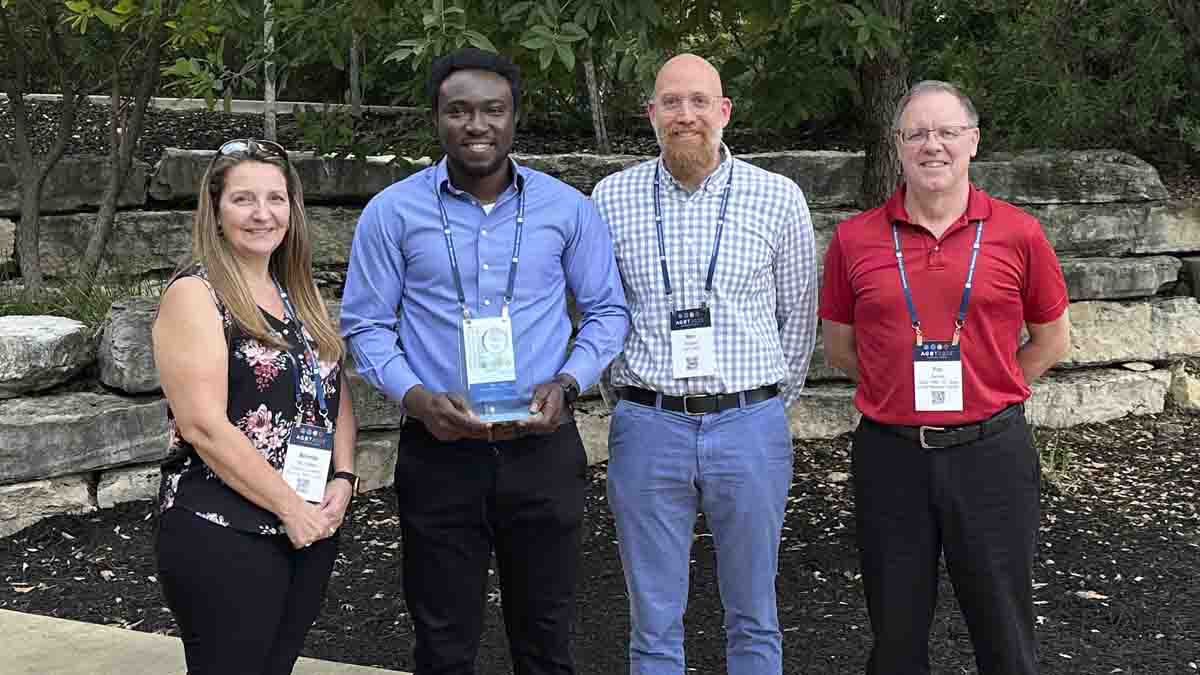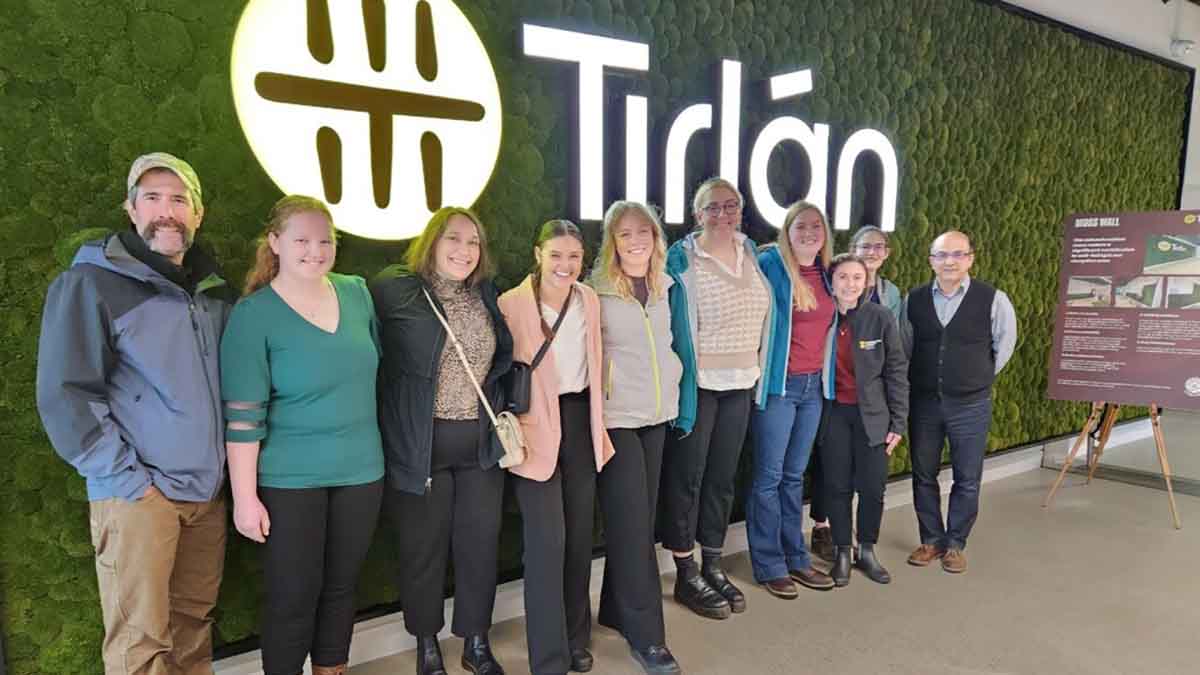Catching Up with CALS — April 19, 2023
Dean's Message — Honoring our Predecessors
Shortly after I became CALS dean in 2016, I made a special trip to Twin Falls to meet one of my predecessors. Auttis M. Mullins succeeded James E. Kraus as dean of the college on July 1, 1972, having arrived at U of I two years earlier to head the Department of Animal Industries. As dean, Mullins was forced to make tough choices to keep the college together in the face of a massive budget cut. Joined by Mark McGuire, director of the Idaho Agricultural Experiment Station, I asked Mullins to reflect on how he weathered that financial storm. I also solicited the former dean’s guidance on how to administer the college. As a brand new dean, I hung on his every word. Mullins passed away in March of 2018 in Jerome at age 93. Fittingly, the CALS programs Mullins helped shape will soon benefit his great-grandson, Riley Klimes. Riley — who paid me a visit, along with his mother Danae, on March 25 — will be double-majoring in agricultural economics: agribusiness emphasis and marketing starting this fall. In addition to his great-grandfather, Riley is following in the footsteps of his mother, who studied business at U of I. Danae’s father and aunts also attended U of I. Riley grew fond of the U of I campus during his two trips to Moscow for FFA state career development events. “I feel very confident that Riley will have a wonderful experience and will be very well looked after, mentored and taken care of because he is going to be in the CALS program,” Danae said. “I know that my granddad would be very, very happy that Riley is attending U of I and that he is going to be part of CALS.”
Since meeting Riley, I’ve thought about how we all owe a debt to those who came before us and laid the foundation for our successes. As the expression goes, we stand on the shoulders of giants. I’ve also mulled how the work we do today has implications for the next generation, who are tasked with building upon the legacies we hand down. I started my career as an assistant professor of entomology with University of California, Riverside. The department had a tradition of displaying a framed photograph of every faculty member in its history. Those were the faces of the scholars who built the reputation of the esteemed department, lending me and my colleagues instant credibility with our peers and stakeholders. It was my responsibility to add something to the department’s hard-earned prestige. Next, I joined the faculty of another renowned program, University of California, Davis, where I became chair of the Department of Entomology and Nematology. Now I’m adding to the reputation of CALS, picking up where prior deans such as John Foltz, John Hammel, Larry Branen and Auttis Mullins left off. I’m privileged to hold the position at an ideal moment. We’ve enjoyed stable funding. We’ve hired tremendous faculty and developed great programs in both agriculture and family and consumer sciences. We’re getting strong industry support. We’re building new facilities that will position CALS as a leader in sustainable agriculture for years to come.
If not for my decision to continue my career at U of I, my daughter Jean Parrella would never have transferred from Davis to join the Vandal family. Her time with CALS in Moscow was transformative. Here she found the supportive environment in which to thrive, with faculty who instilled in her a passion for science communication and helped her focus on her career goals. On May 13, Jean will graduate with a doctorate from Texas A&M University, and she’ll begin a faculty position at Virginia Tech in August. I anticipate that Riley will enjoy similar success as a CALS student. It’s truly special knowing that Auttis Mullins’ great-grandson will soon be part of our next class of freshmen, who will learn the tools to improve the world and will build upon the strong reputation of CALS.

Michael P. Parrella
Dean
College of Agricultural and Life Sciences
By the Numbers
In early 2021, Extension Foundation, in cooperation with Extension Committee on Organization and Policy, announced an interagency agreement with USDA’s National Institute of Food and Agriculture and Centers for Disease Control and Prevention to quickly respond to the needs of rural and underserved communities. The resulting Extension Collaborative on Immunization Teaching and Engagement (EXCITE) program works through land-grant universities to build a stronger immunization education model to address vaccine hesitancy. UI Extension’s EXCITE program has hosted a series of mobile vaccination clinics for Hispanic families in the agricultural industries. Through 20 clinics, the EXCITE program has had 622 direct education contacts, administering 191 COVID-19 vaccines, 122 flu vaccines and 28 tetanus, diphtheria and pertussis shots.
Our Stories
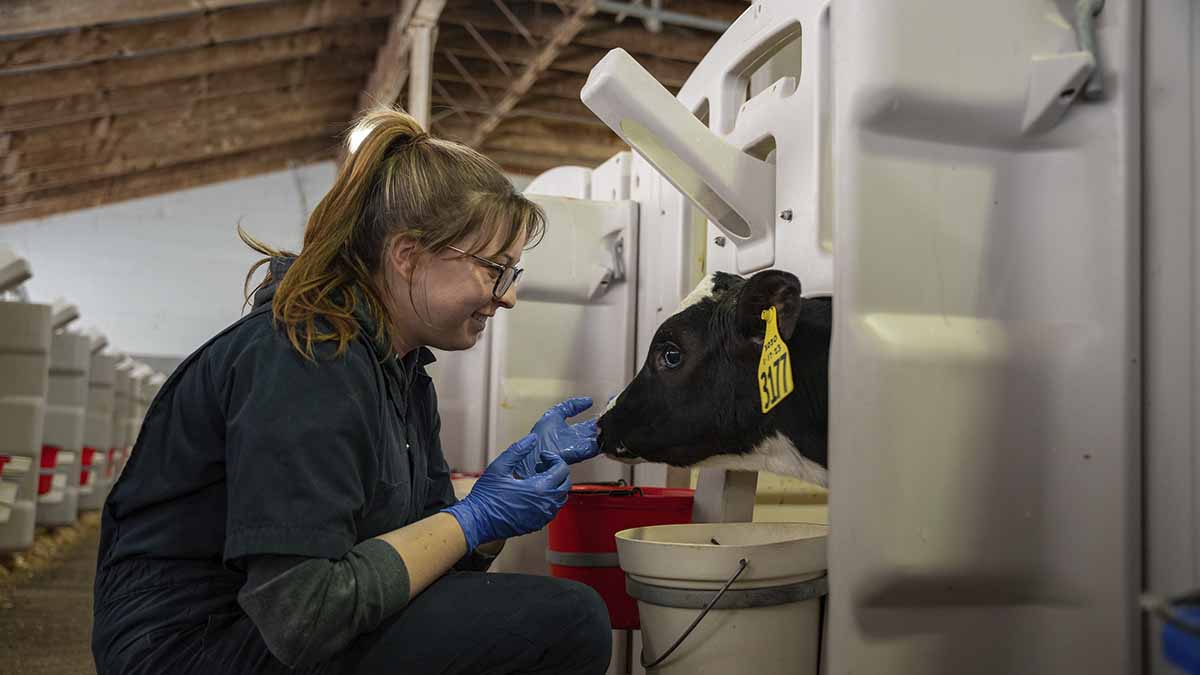
Passion for Animal Science
Natalie Ellis remembers the exact moment she decided she wanted to be a veterinarian.
Growing up in Murrieta, California, Ellis was a frequent visitor to the San Diego Zoo. During a visit when she was 15, Ellis learned about conservation efforts to save the northern white rhino — only two females are still in existence. Veterinarians and researchers at the zoo were investigating several reproductive options since no males remain, including turning stem cells into sex cells and using the southern white rhino as surrogates.
“I thought this was so cool. I started learning about it and it grew into this passion for animal science, the welfare and enrichment and conservation and it just snowballed into, I want to be a part of it,” she said. “It got me thinking about things I’d never thought about before.”
Other than observing exotic animals at the zoo and having two Great Danes as pets, Ellis had no experience working directly with animals. That all changed when she enrolled at the University of Idaho to study animal and veterinary science: pre-vet option.
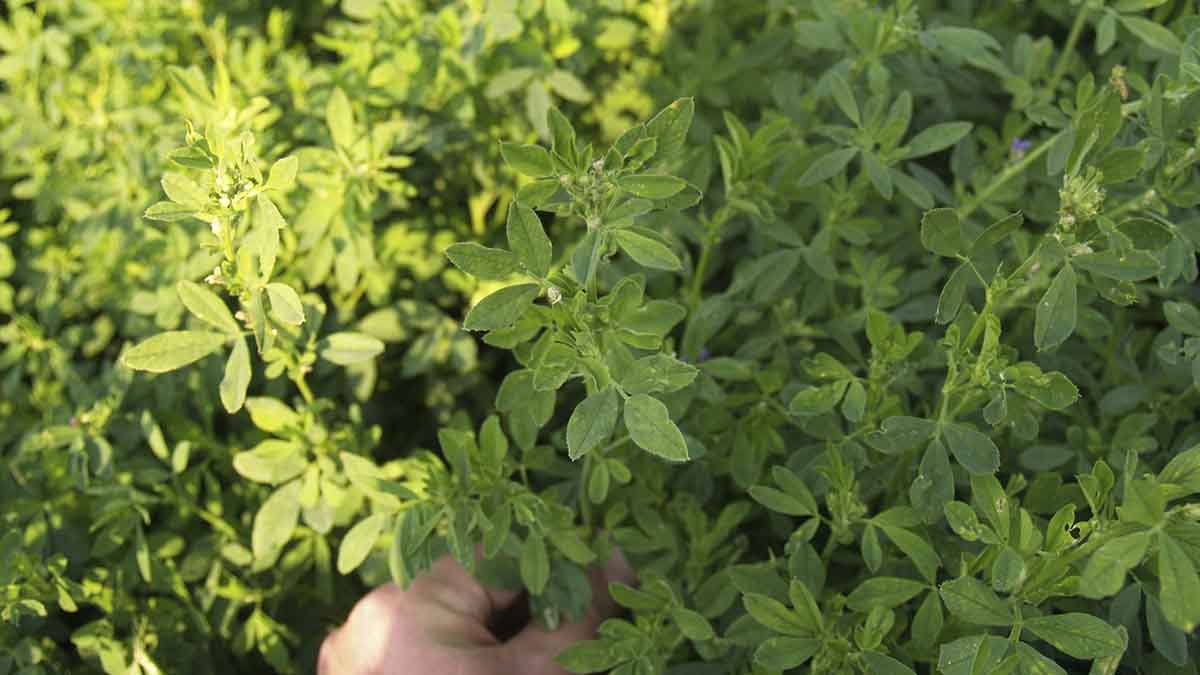
New Alfalfa Virus
A University of Idaho researcher discovered a previously unknown virus in alfalfa samples taken from a Magic Valley field and is conducting tests to determine if the disease poses a threat to farmers.
U of I plant virologist Alexander Karasev took the samples in 2020 while collecting symptomatic foliage in a field at the future site of Idaho CAFE near Rupert. Karasev named the newly discovered disease Snake River Virus, after the Snake River Valley in which the field is located.
Karasev and Erik Wenninger, an entomologist with the Kimberly Research and Extension Center, recently received a three-year, $300,000 USDA National Institute of Food and Agriculture grant to study if the virus is economically important for growers, how it’s transmitted, foliar symptoms of infection and the range of host crops it can infect.
Karasev chose the Rupert field for his sampling due to the prevalence of foliage with common symptoms of viral diseases, including mosaic leaf discoloration and vein clearing. He was seeking to test a new diagnostic genetic sequencing methodology, known as deep sequencing, and associated laboratory equipment. Researchers with the National Center for Biotechnology Information in Maryland compared Karasev’s results against their database and determined it was a new virus.
The discovery is detailed in the paper “A Novel Flavi-like Virus in Alfalfa Crops Along the Snake River Valley,” published in the June 2022 issue of the journal “Viruses.” In addition to Karasev, authors of the paper include Wenninger, U of I entomologist Jennifer Dahan, Gardenia Orellana, a UI Extension research specialist in plant pathology; and National Center for Biotechnology Information researchers Yuri Wolf and Eugene V. Koonin.
“Alfalfa is one of the largest crops grown in the state but is one of the least studied of all of the major crops in the state,” Karasev said. “The production of alfalfa has special characteristics that make it of interest to me. You have a crop that stays in the same place for four years. It acts like a sponge — any type of pathogens and diseases tend to make a stop in this crop.”
Flaviviruses comprise the genus that includes yellow fever and had never previously been found to infect plants. Snake River Virus shouldn’t threaten human health.
Based on subsequent testing of Magic Valley fields, Snake River Virus is widespread within the region. It’s possible it’s an ancient virus that’s flown under the radar and was only recently discovered thanks to new diagnostic technology.
“Very likely, based on the analysis of our collaborators, this virus may be the founder of a new taxon of flavi-like viruses,” Karasev said. “It’s always interesting and always fun to see something people didn’t see before.”
Testing of samples from the Rupert field also confirmed infections by six other viral diseases known to infect alfalfa. Four of the diseases are transmitted only by seed and are considered benign, causing no known symptoms. Two of the diseases — alfalfa mosaic virus and bean leafroll virus — can be transmitted by aphids and may be contributing to diminished yield and quality in older alfalfa plantings. Karasev hypothesizes that the increase in virus pressure may be a key reason why alfalfa production diminishes by the fourth year in production, leading most farmers to rotate to a different crop.
“The assumption was viruses in general caused very little harm to alfalfa,” Karasev said. “We’re trying to get some data to confirm or refute it. Until you start studying it you may not realize it’s a problem.”
Karasev suspects Snake River Virus is spread by thrips. At Karasev’s request, Wenninger collected samples from the university’s research fields in Kimberly. Alfalfa foliage and some thrips Wenninger collected from Kimberly were confirmed to be positive for Snake River Virus. Because positive samples were found at locations 50 miles apart and on opposite sides of the Snake River, Karasev suspects the virus is widespread in the region.
Wenninger plans to have a master’s student research if the virus is indeed transmitted by thrips. The master’s student will also apply insecticides in plots for comparison against untreated checks to assess how Snake River Virus and other viruses affect alfalfa yield and quality, as well as the efficacy of treatments at controlling thrips, aphids and other insect vectors.
“That’s the purpose of this (USDA NIFA) grant — to see the effects of various alfalfa viruses on the quality of hay,” Karasev said. “If we can suppress and manage these viruses, maybe we can increase the quality and economic efficiency of hay production.”
The project, “Dissecting Effects of Insect-Transmitted Viruses on Yield and Quality of Forage Alfalfa Crops,” was funded with a three-year, $300,000 USDA-NIFA grant, of which 100% was the federal share, under award No. 2022-70005-38273.
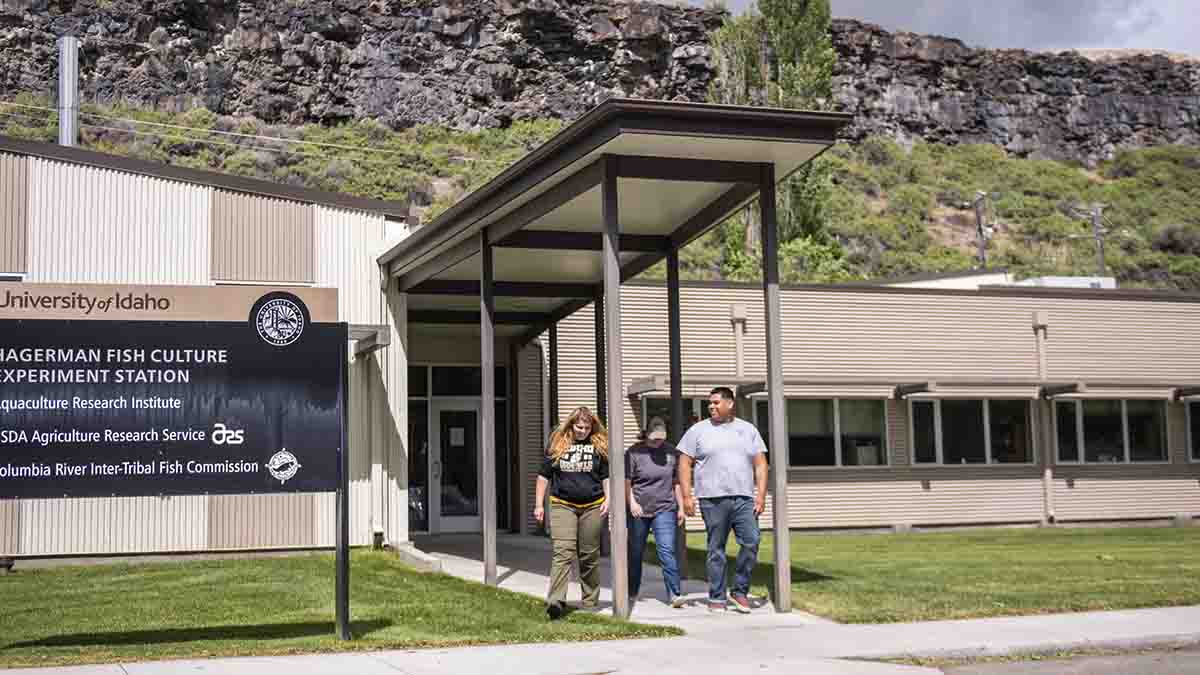
U of I Big Fish in Aquaculture
University of Idaho was a small university with a mammoth presence at a recent national aquaculture conference that attracts top scientists from throughout the world.
The schedule for Aquaculture America 2023, hosted Feb. 23-26 in New Orleans, was filled with presentations featuring students, postdoctoral researchers and faculty involved in U of I’s Aquaculture Research Institute (ARI).
The Vandals were in impressive company at the conference, participating alongside the likes of Texas A&M University, Louisiana State University, Auburn University, Mississippi State University, University of Florida and University of California, Davis.
“Most universities there are twice as large in enrollment as U of I. We punch above our weight class in that respect,” said Matt Powell, a professor specializing in fish genetics and physiology with U of I’s Department of Animal, Veterinary and Food Sciences. “We’re exceedingly well represented, more so than any other university our size and more so than most all of those other universities.”
ARI is regarded as the top U.S. program for freshwater fish research. The institute has also been ranked on a couple of occasions as the No. 1 program for publishing research on fish nutrition, according to publications that review literature on the subject.
“We study cold-water fish like trout, salmon and burbot,” Powell said. “For cold-water aquaculture, we’re the place to go.”
History of ARI
The College of Agricultural and Life Sciences (CALS) and the College of Natural Resources (CNR) are the key partners in ARI, but the institute is interdisciplinary, working with departments and colleges across the university. ARI also has formal collaborative research agreements with USDA’s Agricultural Research Service and the Columbia River Inter-Tribal Fish Commission. Both entities contribute to the high-tech equipment housed at ARI, which helps the institute leverage greater funding for its projects.
The institute’s history traces back to the 1980s, when the U.S. sought to deemphasize poultry programs in favor of aquaculture research. U of I was part of the trend, founding ARI on the site of an old chicken coop at the Moscow campus in 1987.
An aquaculture wet lab, which is still used, was built on campus the following year. Separate small tanks in the CNR building are still used for disease research.
In 1996, U of I leased a mothballed fish nutrition lab and 4 acres of property in Magic Valley from the U.S. Fish and Wildlife Service. The federal government transferred ownership of the facility — called the Hagerman Fish Culture Experiment Station — in 1998.
“We have a whole gamut of students interested in conservation, as well as true fisheries, as well as commercial aquaculture,” Powell said, adding that the facility’s technology attracts international scientists and students interested in using it for their own projects.
ARI Research
Fish represents the major protein source for 15% of the world’s population, outstripping both poultry and beef production, according to the Food and Agriculture Organization of the United Nations.
Aquaculture is the world’s fastest-growing agricultural sector, with global production increasing by 8% annually. Demand for fish should only continue increasing, given that it’s a cheap economical protein source to produce. The Magic Valley is a major player in the industry, producing about three-quarters of the farm-raised rainbow trout consumed in the U.S.
Furthermore, about 14% of the nation’s trout broodstock possess genetics that ARI helped develop.
Throughout the past 22 years, ARI has led major advancements toward moving the industry away from feeding fishmeal, which depletes the oceans of their wild fish populations, in favor of a sustainable, vegetarian diet. ARI scientists and their collaborators have bred rainbow trout — a carnivorous fish in the wild — capable of thriving on soybean meal, without sacrificing the taste or nutrition of the fillets. ARI’s vegetarian trout grow as rapidly as trout fed fishmeal.
ARI researchers have also developed feed with half of the usual phosphorus content, which helps reduce water pollution and enables fish farmers to step up production while still meeting water-quality standards. With grant funding ARI recently received to study fish farm effluent, Powell will soon study mechanical and physiological ways to reduce nitrogen loading into the environment.
ARI research has broad applicability beyond regional trout production.
“The questions we answer and address for this industry are questions that worldwide help with aquaculture sustainability,” Powell said.
Like the industry it serves, ARI is also growing. The institute added Jacob Bledsoe last summer as an Extension specialist focusing on fish physiology and the microbiome, and two research scientists started in February and already have several research projects in the works.
Faces and Places
Three 2023 University of Idaho Extension Awards were awarded during the UI Extension Annual Conference in Sun Valley on April 11. Winners included Joseph Sagers, Diversity Award; Gretchen Manker and Tina Miller, G. Elbert McProud Memorial Scholarship; and Ariel Agenbroad, Excellence in Extension Award.
University of Idaho’s soil judging team recently finished in seventh place during the 2023 National Collegiate Soil Judging Contest in Woodward, Oklahoma. The team included Tegan Macy, a freshman crop science major from Culver, Oregon; Julian Smith, a senior rangeland conservation major from Rigby; Ellie McKnight, a senior environmental science major from Donnelly; Olivia Redmond, a senior crop management major from Boise; Sky Reinhardt, a freshman agricultural systems management major from Bonners Ferry; and Daniel Brereton, a junior finance major from Lewiston. The team is coached by Paul Tietz, a soil and land resources doctoral student, and is advised by Jodi Johnson-Maynard, head of the Department of Soil and Water Systems.
Soil and Water Systems Assistant Professor Laurel Lynch recently led a research expedition to Tasmania, Australia to study the effects Tasmanian devils have on their ecosystems, particularly the soil biological communities. Accompanying Lynch were doctoral student Torrey Stephenson, environmental science senior Cooper Moon, CNR associate professor and co-PI Tara Hudiburg, postdoc Justin Mathias and WSU postdoc Savannah Bartel. SWS research associate professor and co-PI Michael Strickland and postdoc Ernest Osburn joined the research team in Tasmania for a trip in the winter.
Temitayo Olagunju, a post-doctoral fellow in Associate Professor Brenda Murdoch’s lab, was recently honored with The Next Gen Leadership Award from Advances in Genome Biology and Technology.
CALS students in Ag Ed 407 Global Agricultural and Life Sciences Systems gained international experience over spring break as they traveled to Spain and Ireland. The three-credit course allows students to travel to other countries to experience their culture, agricultural and natural resources industries. Bob Haggerty, director of CALS International Programs, leads the different sections of Ag Ed 407 each spring semester.
Olivia Redmond, Taylor Thurston, Keira Packer, Ana Segsworth, Raquel Dimond, Kaitlin Mirkin, Courtney Buchert and Moriah Michaels were joined by Professor and Extension Specialist Joe Dalton and Professor Amin Ahmadzadeh in Ireland. The group toured Glanbia’s cheese manufacturing plant, Tirlán Headquarters and the Paddy O’Keeffe Innovation Centre for the Advancement of Irish Grassland and Dairying.
Julia Furioso, Harleigh Johnson, Sophia Oxarango, Jaylee Allen, Kaden Ball, Daniel Salas and Adam Kennedy were joined by professors Mike Thornton and Matt Powell in Navarra and the Basque Country in Spain. They visited La Concha Beach, the Monument al Encierro and the Dehesa De Buñuel specialty cattle and horse operation.
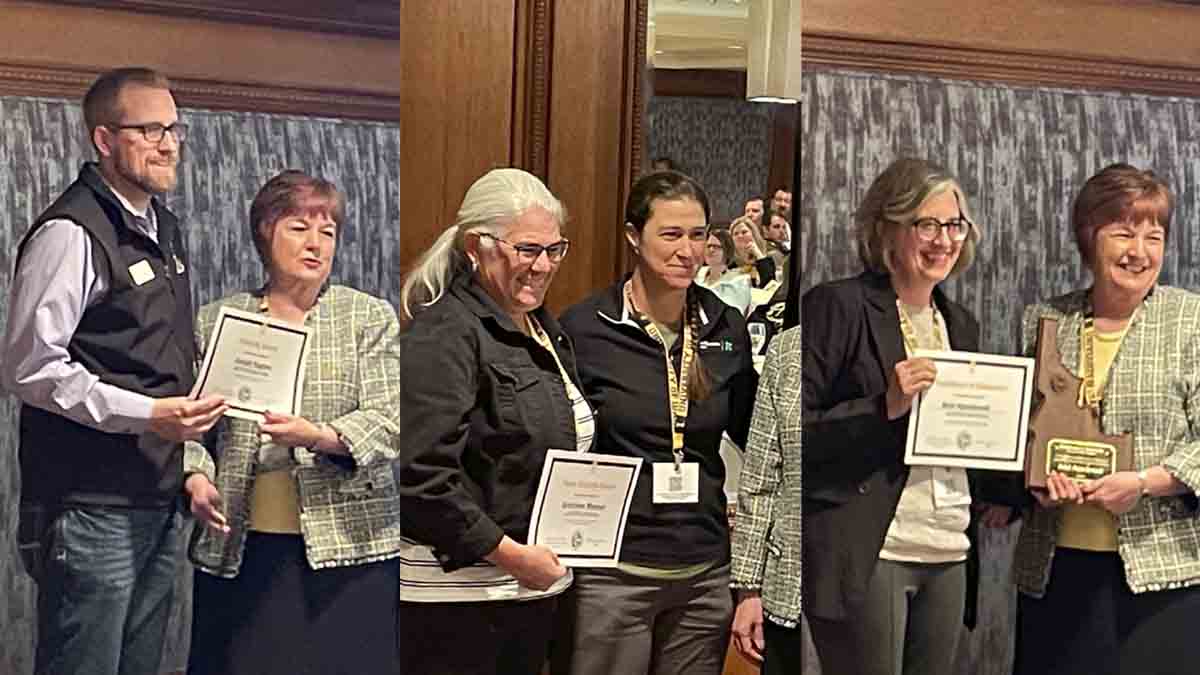
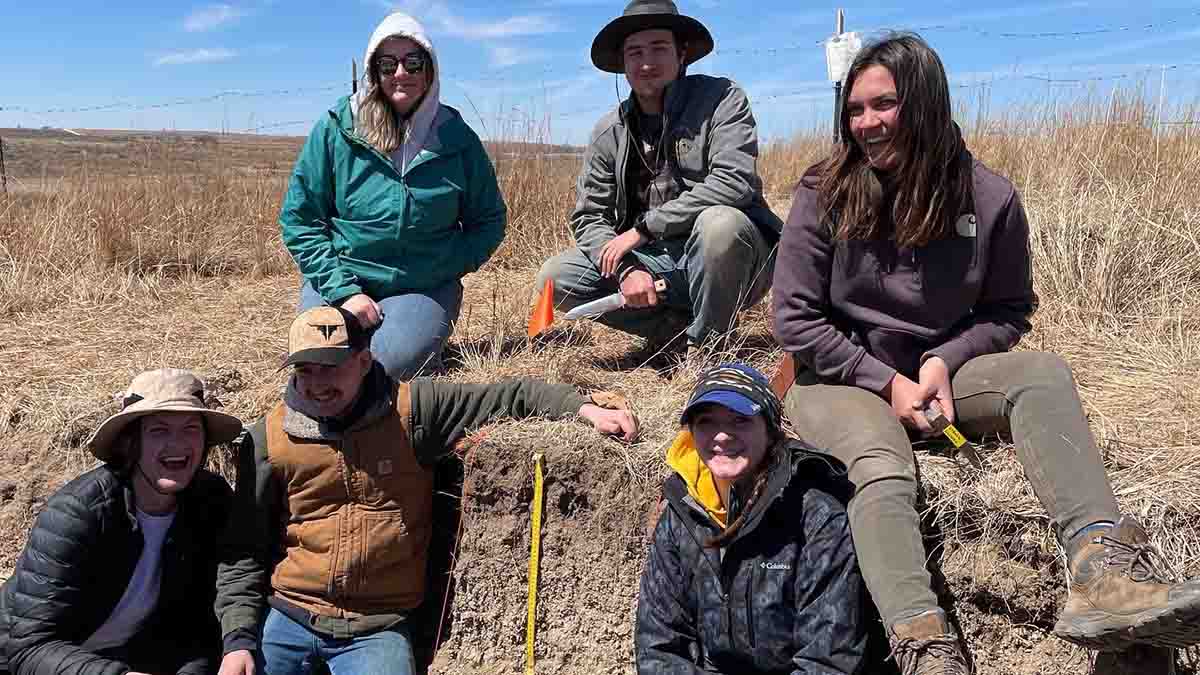
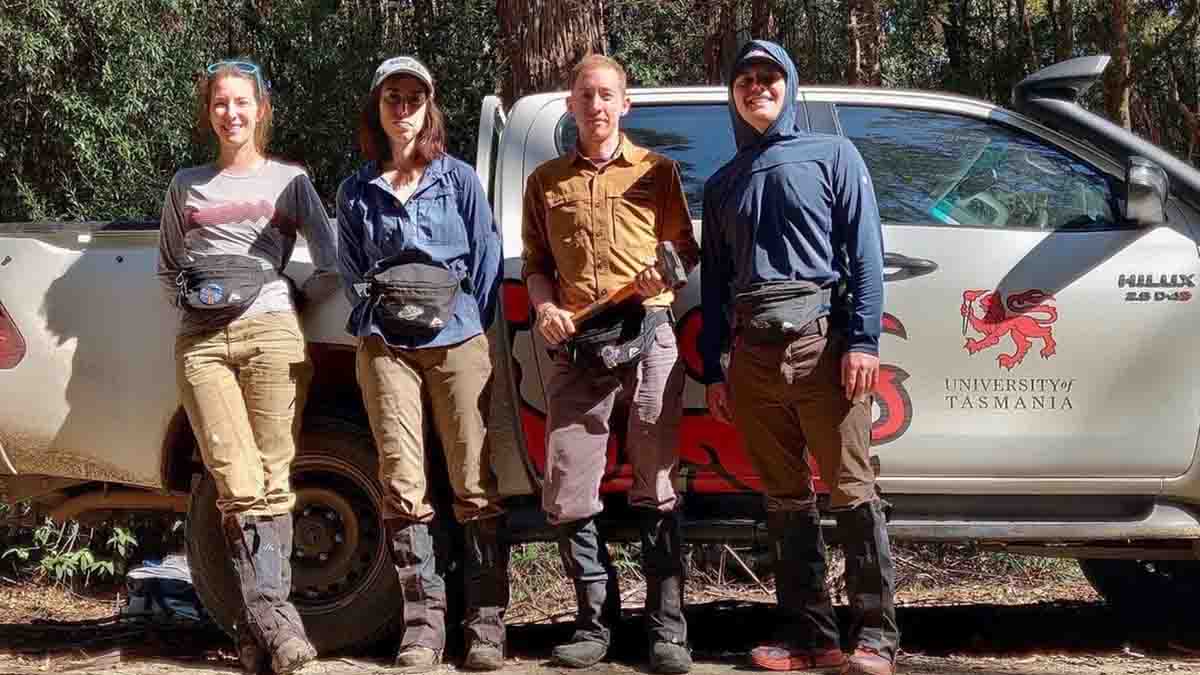
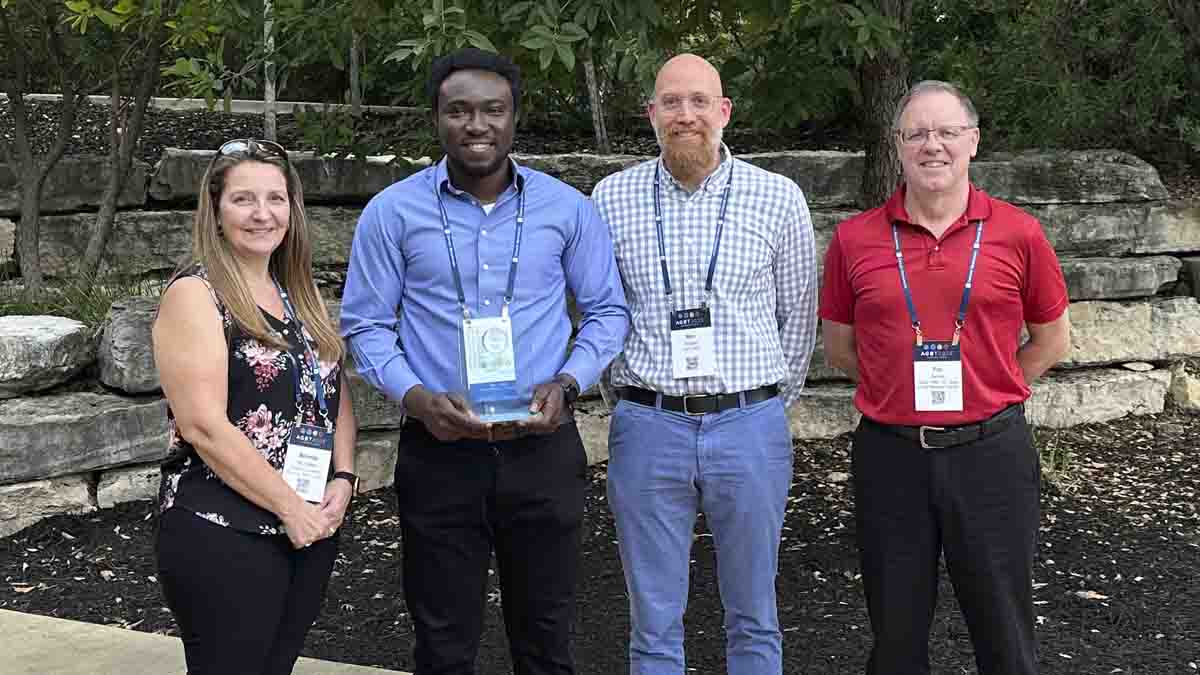
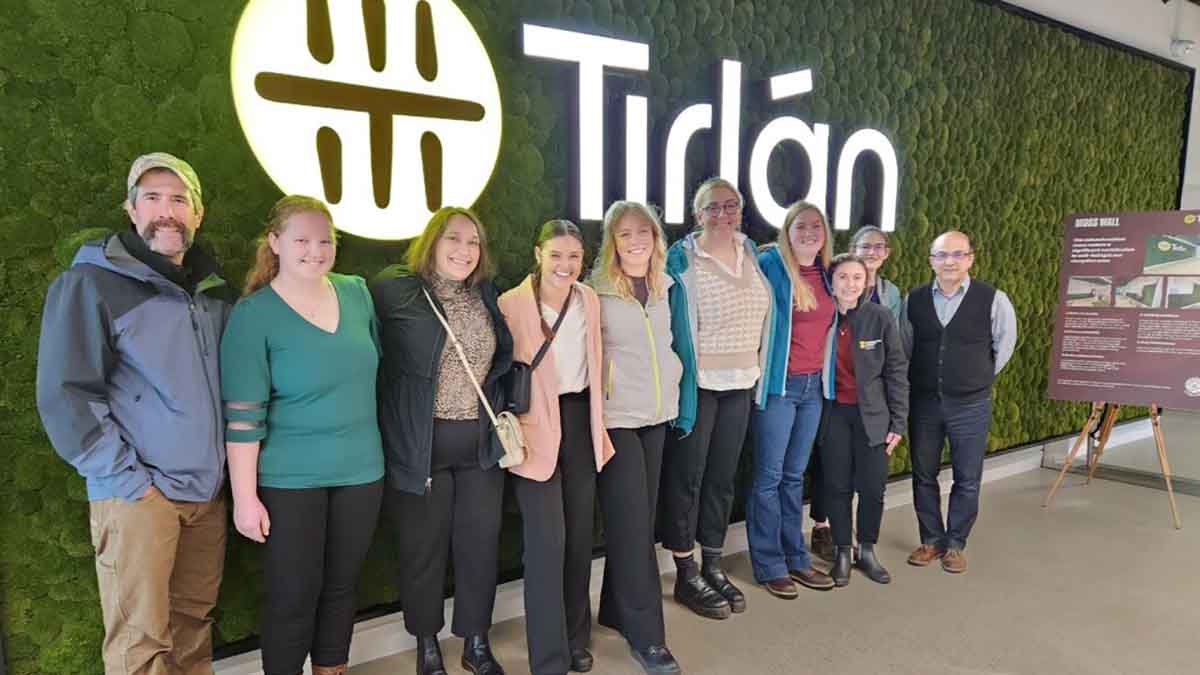
Events
- April 20 — Pressure Canning Basics, online
- April 24 — CALS Speaker Series: Global food security in CCC (Conflict, Climate, COVID) Times, Moscow
- April 25, May 9 — Idaho Home Garden Tips, online
- May 1 — Deadline for application to attend the Young Cattle Producer Conference
- May 1 — Remote Work Professional Certificate, online
- May 2, 16 — Ag Talk Tuesday, online
- May 3 — CALS Awards Banquet
- May 13 — 10 Acres and a Dream, Sandpoint Organic Agriculture Center







